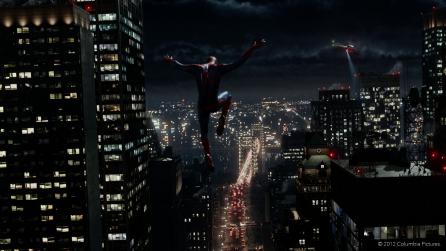Film and TV
Think you’re too small for Katana? Think again…
Why smaller studios are investing in Katana to improve long-term ROI
In recent years, Katana has cemented its position as the best look development and lighting tool on the market. Huge players, ranging from Pixar to ILM, have been harnessing the power of the toolset to create higher quality work, faster. But Katana isn’t just for the top tier Hollywood studios. We spoke to Cinemasphere, a small outfit based in Jakarta, Indonesia, about why they chose to integrate Katana into their pipeline - and how it’s having a big impact on ROI.
Reducing the costs of technical integration
Amrin Nugraha, TVC film director and VFX supervisor at Cinemasphere, knows a thing or two about the need for smaller studios to play to their strengths: “Larger outfits have financial capital. Our capital is our knowledge: how to work in an efficient way, how to build an agile team, choosing the right tools to use”, he says.
With money tight, the team previously relied heavily on open source software and libraries to do the bulk of the leg work, including Blender, Alembic, OCIO, and OpenSubdiv.
As Amrin found however, this is something of a false economy: “The core of these open source programs is mostly in C++ and Python. We faced huge technical difficulties getting them to work in our pipeline - problems that required the use of a TD. For a small facility like us, hiring a dedicated TD is virtually impossible: the scale of the job and limited budget almost always don’t allow it.”
It occured to Amrin that the answer might lie in adopting a toolset that could cut out the need for expensive custom technical integration. The initial outlay for the tool would be vastly offest by the savings the business would make on hiring a TD to make their open source software fit for purpose: “For us, Katana is like a Swiss Army knife. We realised that most of the TD work we needed (the C++ part) was done by Katana - so we only needed to do the Python part. This saved us a lot of money, since we could avoid hiring a TD for every little thing.”
Using artists where they’re needed most
One of the biggest hurdles smaller studios face when it comes to competing for work is limited human resource. Where the ILMs and Pixars can set armies of artists to work on projects to meet tight deadlines, Cinemasphere has a staff of just nine.
The option to throw money at the situation often just isn’t there - so efficiency is the name of the game.
As Amrin explains: “The necessity to work efficiently is a must. In all my 20 years’ experience as a TVC director and VFX supervisor, this is the first time I can use minimal human resources for a job. Because with Katana artist idle time is virtually zero, we get more done in a shorter time. This automatically improves our ROI.”
The knock-on effect of this is that human resource is freed up to work on other parts of the project - vital in a smaller studio, where artists are required to work on many different pipeline areas and on a multitude of tasks: “With Katana, our look development process doesn’t stall any other work in our main pipeline. Artists working on 3D modeling and animation can get on with that, without being sucked into the look development.”
Allowing a better work-life balance
Cinemasphere have clearly seen some huge improvements to their ROI since investing in Katana. While that’s great for the business’ bottom line, it’s not the only benefit the toolset has brought.
Outside of the financial rewards, Amrin has noticed Katana making a significant impact on his artists’ work-life balance also: “My team are happy - now their Friday evenings are free! Before we had Katana, there was always one left behind.”



